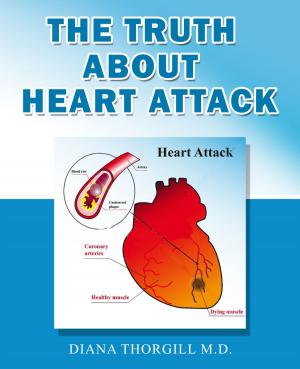Arteriosclerosis: Symptoms, Diagnosis, Medication, Prevention
Nonfiction, Health & Well Being, Health, Ailments & Diseases, Heart, Medical, Diseases| Author: | Diana Thorgill | ISBN: | 9781301082216 |
| Publisher: | Stories of Everyday's Woe Publishing House | Publication: | July 25, 2013 |
| Imprint: | Smashwords Edition | Language: | English |
| Author: | Diana Thorgill |
| ISBN: | 9781301082216 |
| Publisher: | Stories of Everyday's Woe Publishing House |
| Publication: | July 25, 2013 |
| Imprint: | Smashwords Edition |
| Language: | English |
Arteriosclerosis can scarcely be considered apart from high blood pressure, and in the view expressed within, with which some may not concur, high blood pressure is considered to be a large factor in the production of arteriosclerosis. As the data on blood pressure has increased, the importance of it has become more evident.
The stress and strain of our daily life causes, as one of its consequences, early arterial degeneration. There can be no doubt that arterial disease in a comparatively young person is more frequent than it was twenty-five years ago, and that the mortality rates are increasing.
Arteriosclerosis is the most common disease of modern times; with prevalence values estimated as 85% at age 50 and accounting for more than 30% of global mortalities, it is the leading cause of death in all regions of the world. This disease is characterized by the formation of fat containing lesions in larger and medium sized arteries, often cumulating in occlusion of an artery supplying the heart. In coronary arteries, arteriosclerosis may also be diagnosed as angina pectoris, a clinically milder form of a disease, caused by narrowing of the arteries and a transient ischemia, which is felt as chest pain.
Arteriosclerosis is characterized by progressive accumulation of lipids, macrophages, cell fragments, and connective tissue material in the tunica of the vascular walls, in a process consisting of and driven by chronic inflammation. The processes governing each of these stages are not completely understood, but it is becoming increasing clear that inflammation is the driving force behind the early artheromatous stages, as well as plaque rupture, and it is also responsible for a major part of the damage occurring after reperfusion of the artery. Arteriosclerosis is a slow process, with the early lesions developing already in childhood.
The disease is chronic, with slow progress during childhood and adolescence, and then it accelerates in adult life to result in plaque erosion and rupture when the lesions become more developed. The process can lead to narrowing of the arterial lumen, or infarction, and consequently transient or more prolonged ischemia of the tissue nourished by the artery. Lesions are more likely to form at branching points where the blood flow is turbulent and therefore slower, which allows components of the blood a closer contact with the endothelium.
Often, patients with chest pain and high risk factors associated with cardiovascular disease develop arthrosclerosis plaques that can either cause stable coronary artery stenosis leading to angina pectoris during exercise or lead to acute coronary or vascular events such as myocardial infarction or stoke when they rupture.
Most cases of myocardial infarction and stoke occur when a thrombus is formed on a previously stable plaque that ruptures. Persons at risk typically have no premonitory symptoms, and angiographic studies of coronaty arteries in patients with nonfatal acute coronary syndromes showed that most such events were due to rapid progression of mild, hem dynamically insignificants lesions.
Diana Thorgill is a prolific writer of healt related books. In this books she gives you all the necessary information about the Symptoms, Diagnosis, Medication and Prevention of Arteriosclerosis.
Make one of the most important decisions in your life: Get Diana Thorgill's book on arteriosclerosis now!
Arteriosclerosis can scarcely be considered apart from high blood pressure, and in the view expressed within, with which some may not concur, high blood pressure is considered to be a large factor in the production of arteriosclerosis. As the data on blood pressure has increased, the importance of it has become more evident.
The stress and strain of our daily life causes, as one of its consequences, early arterial degeneration. There can be no doubt that arterial disease in a comparatively young person is more frequent than it was twenty-five years ago, and that the mortality rates are increasing.
Arteriosclerosis is the most common disease of modern times; with prevalence values estimated as 85% at age 50 and accounting for more than 30% of global mortalities, it is the leading cause of death in all regions of the world. This disease is characterized by the formation of fat containing lesions in larger and medium sized arteries, often cumulating in occlusion of an artery supplying the heart. In coronary arteries, arteriosclerosis may also be diagnosed as angina pectoris, a clinically milder form of a disease, caused by narrowing of the arteries and a transient ischemia, which is felt as chest pain.
Arteriosclerosis is characterized by progressive accumulation of lipids, macrophages, cell fragments, and connective tissue material in the tunica of the vascular walls, in a process consisting of and driven by chronic inflammation. The processes governing each of these stages are not completely understood, but it is becoming increasing clear that inflammation is the driving force behind the early artheromatous stages, as well as plaque rupture, and it is also responsible for a major part of the damage occurring after reperfusion of the artery. Arteriosclerosis is a slow process, with the early lesions developing already in childhood.
The disease is chronic, with slow progress during childhood and adolescence, and then it accelerates in adult life to result in plaque erosion and rupture when the lesions become more developed. The process can lead to narrowing of the arterial lumen, or infarction, and consequently transient or more prolonged ischemia of the tissue nourished by the artery. Lesions are more likely to form at branching points where the blood flow is turbulent and therefore slower, which allows components of the blood a closer contact with the endothelium.
Often, patients with chest pain and high risk factors associated with cardiovascular disease develop arthrosclerosis plaques that can either cause stable coronary artery stenosis leading to angina pectoris during exercise or lead to acute coronary or vascular events such as myocardial infarction or stoke when they rupture.
Most cases of myocardial infarction and stoke occur when a thrombus is formed on a previously stable plaque that ruptures. Persons at risk typically have no premonitory symptoms, and angiographic studies of coronaty arteries in patients with nonfatal acute coronary syndromes showed that most such events were due to rapid progression of mild, hem dynamically insignificants lesions.
Diana Thorgill is a prolific writer of healt related books. In this books she gives you all the necessary information about the Symptoms, Diagnosis, Medication and Prevention of Arteriosclerosis.
Make one of the most important decisions in your life: Get Diana Thorgill's book on arteriosclerosis now!















